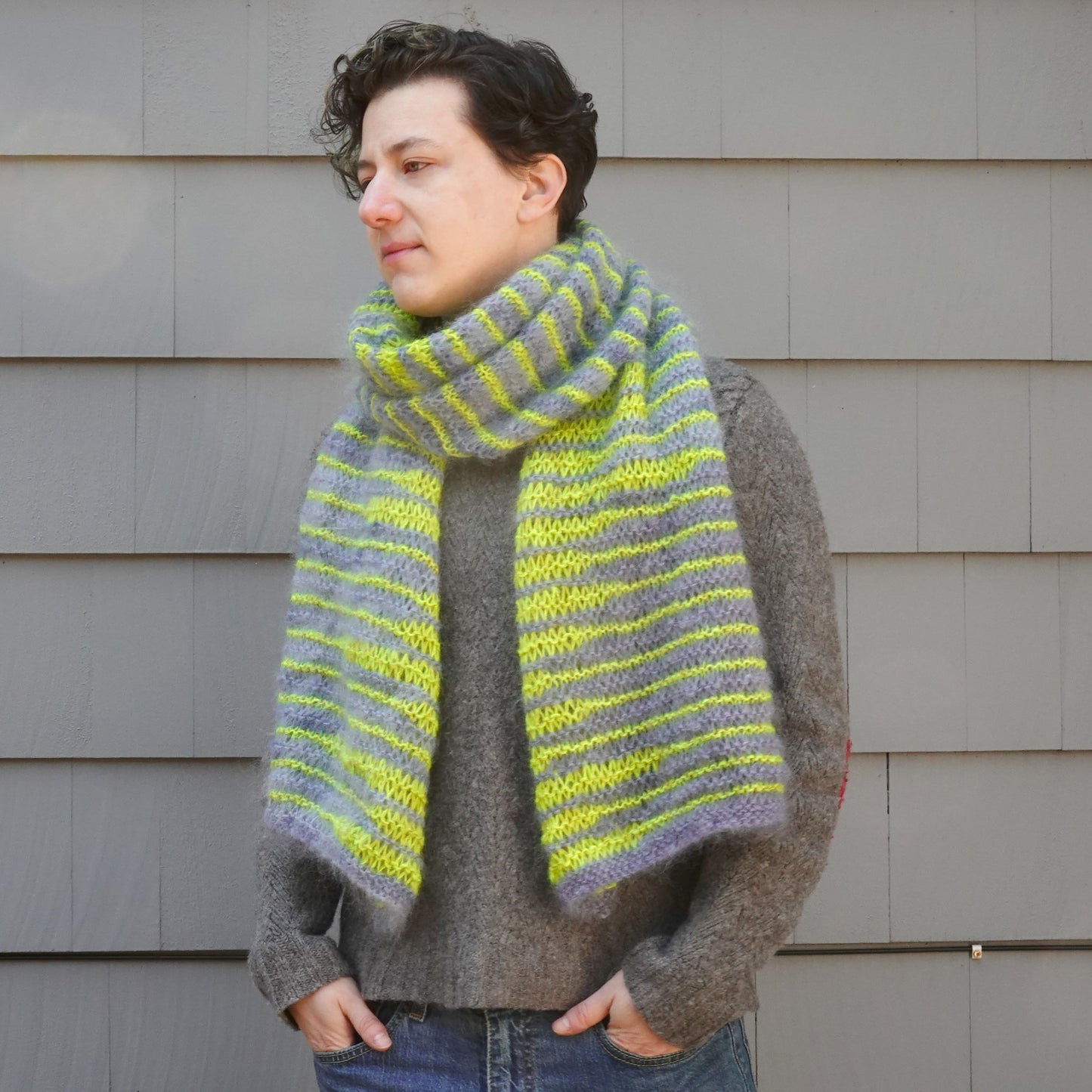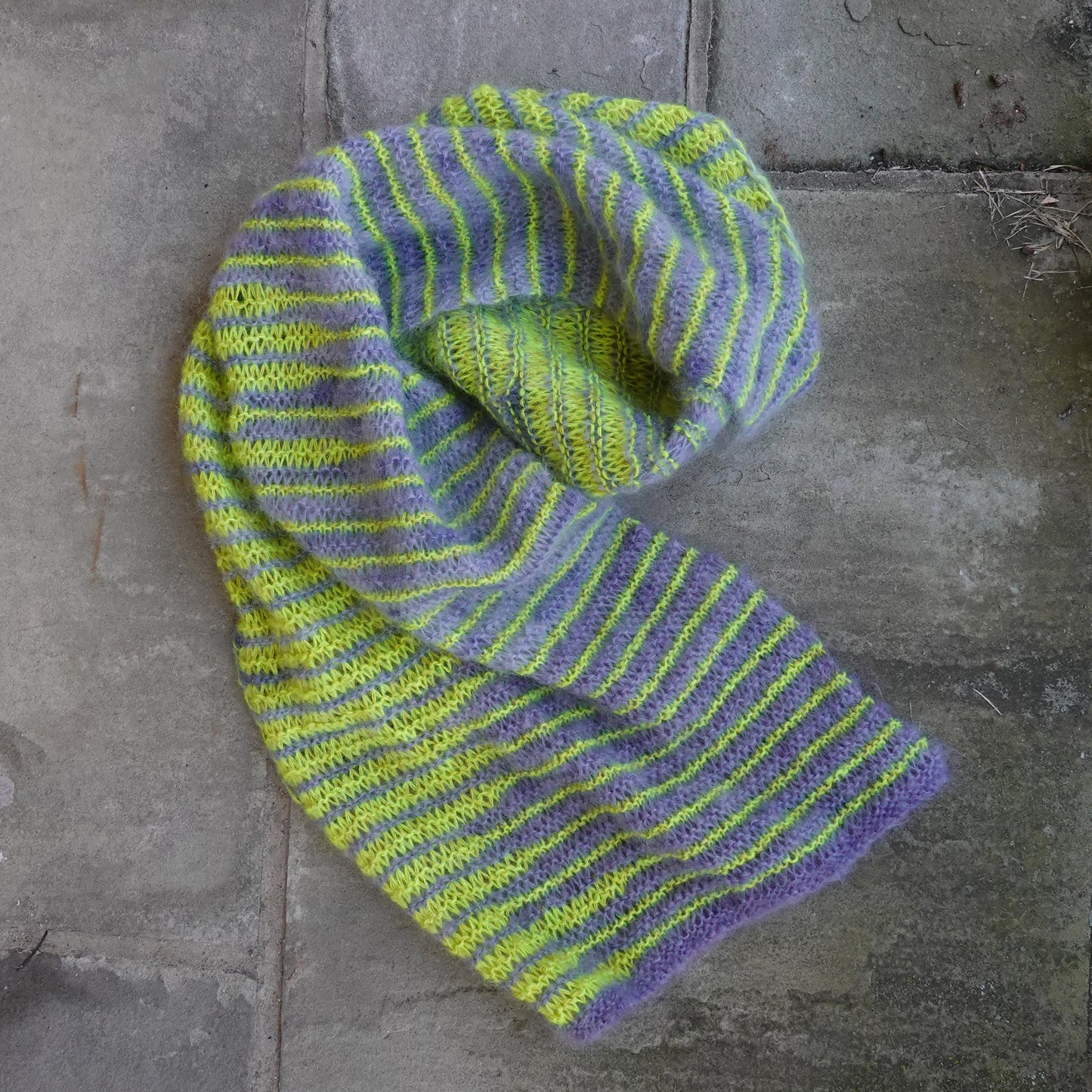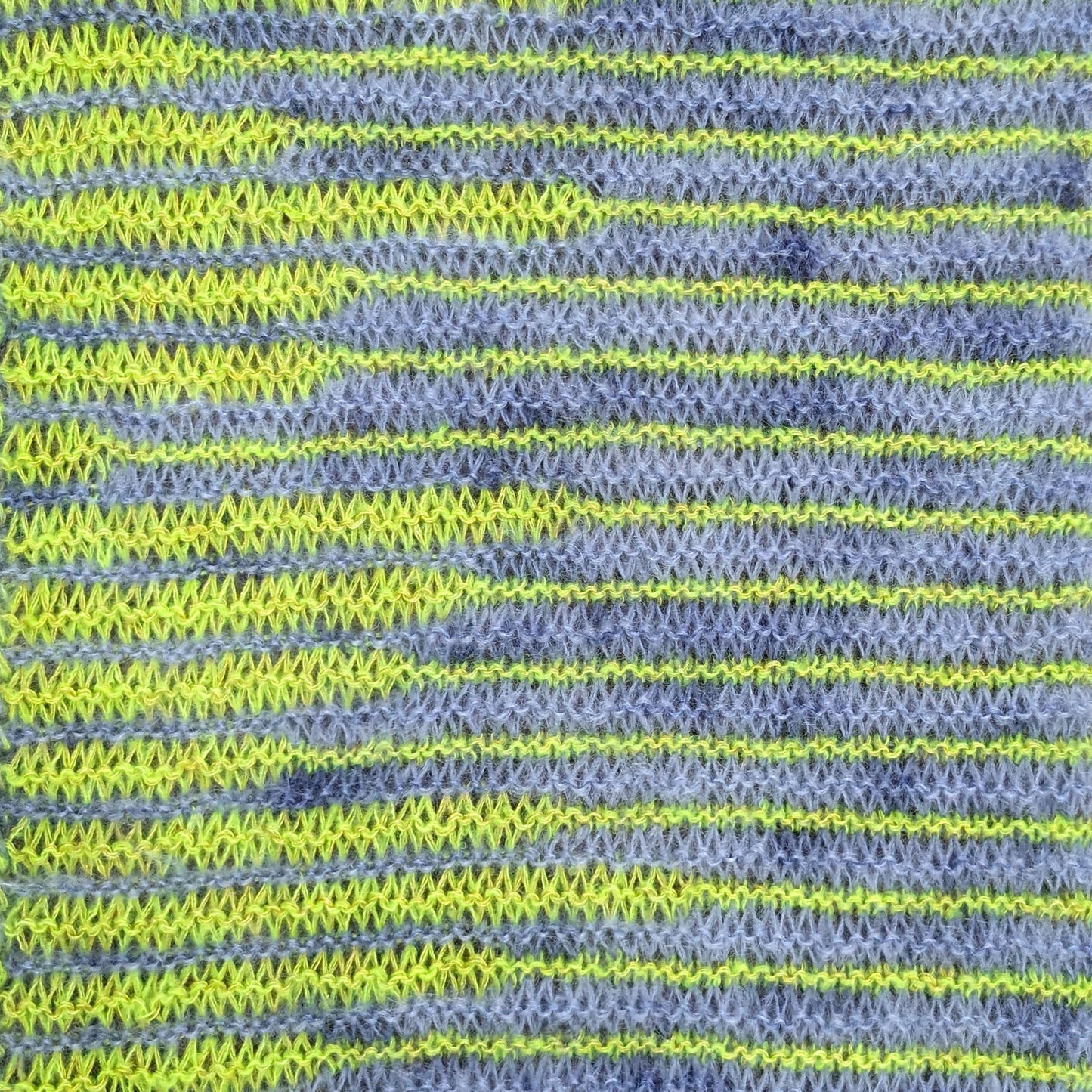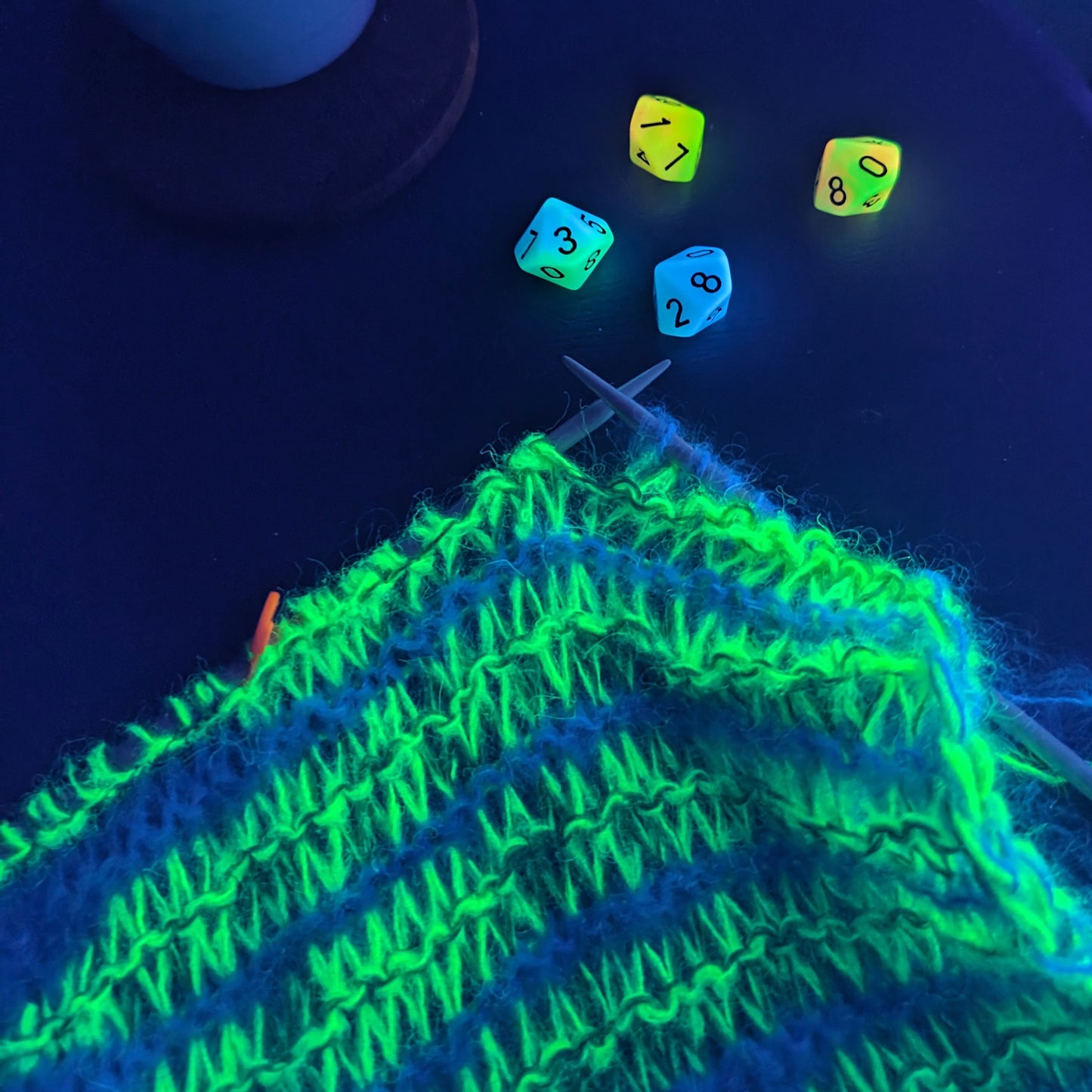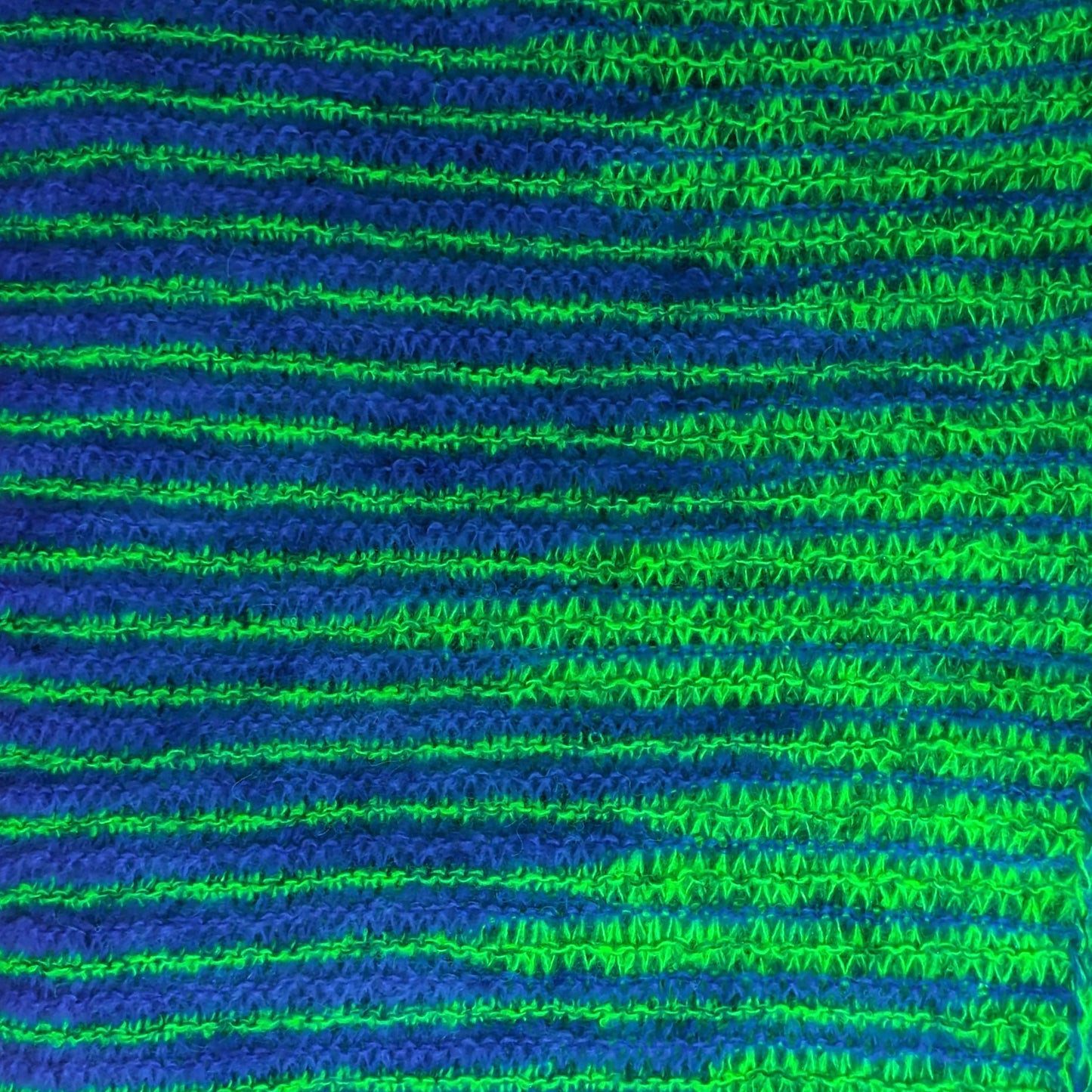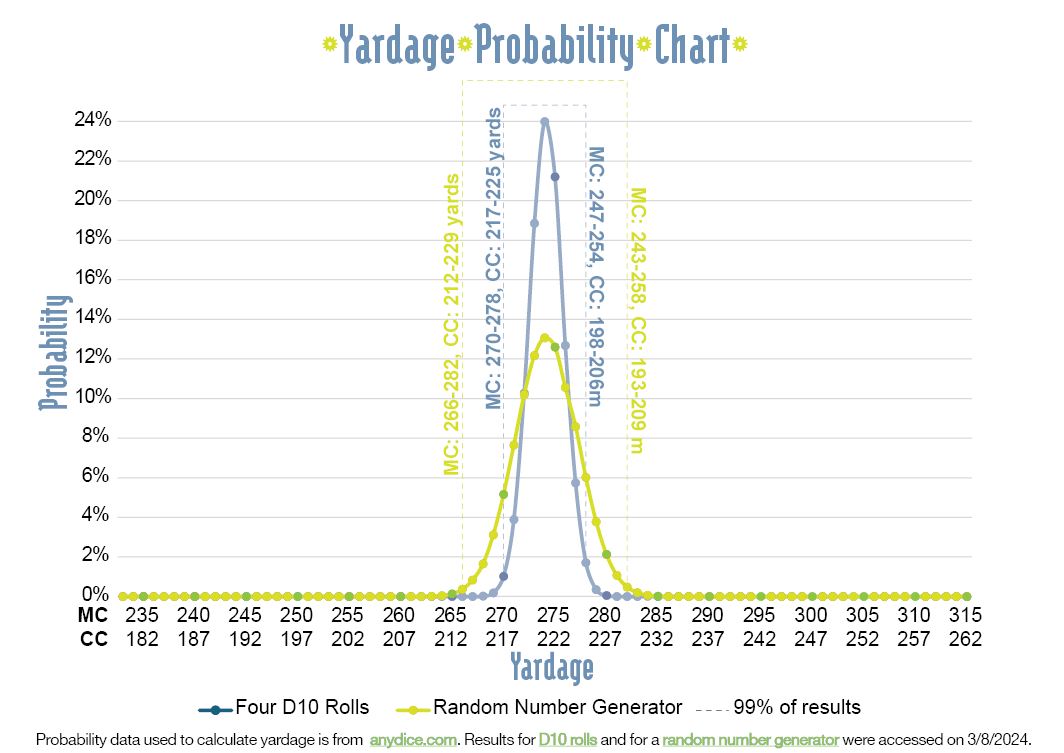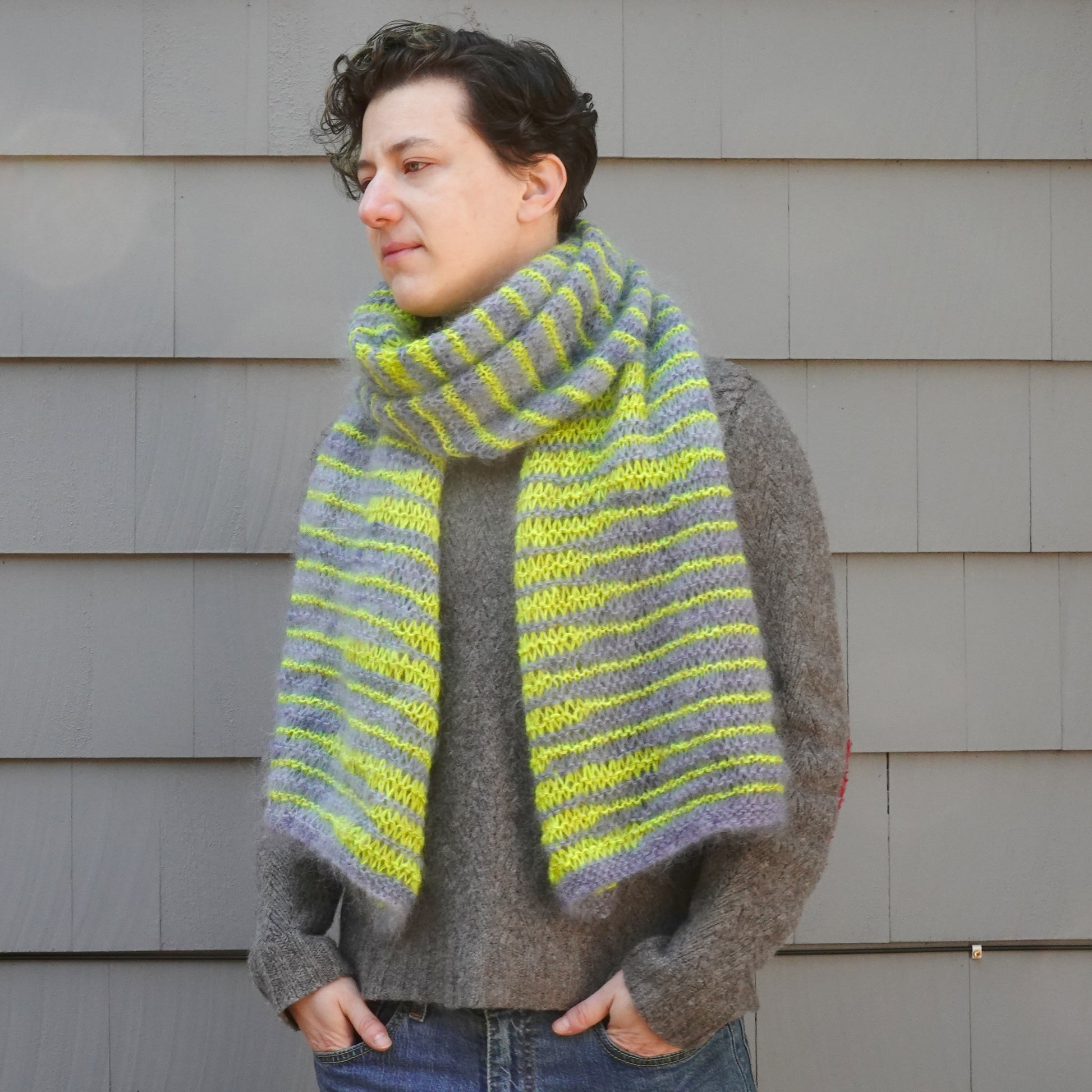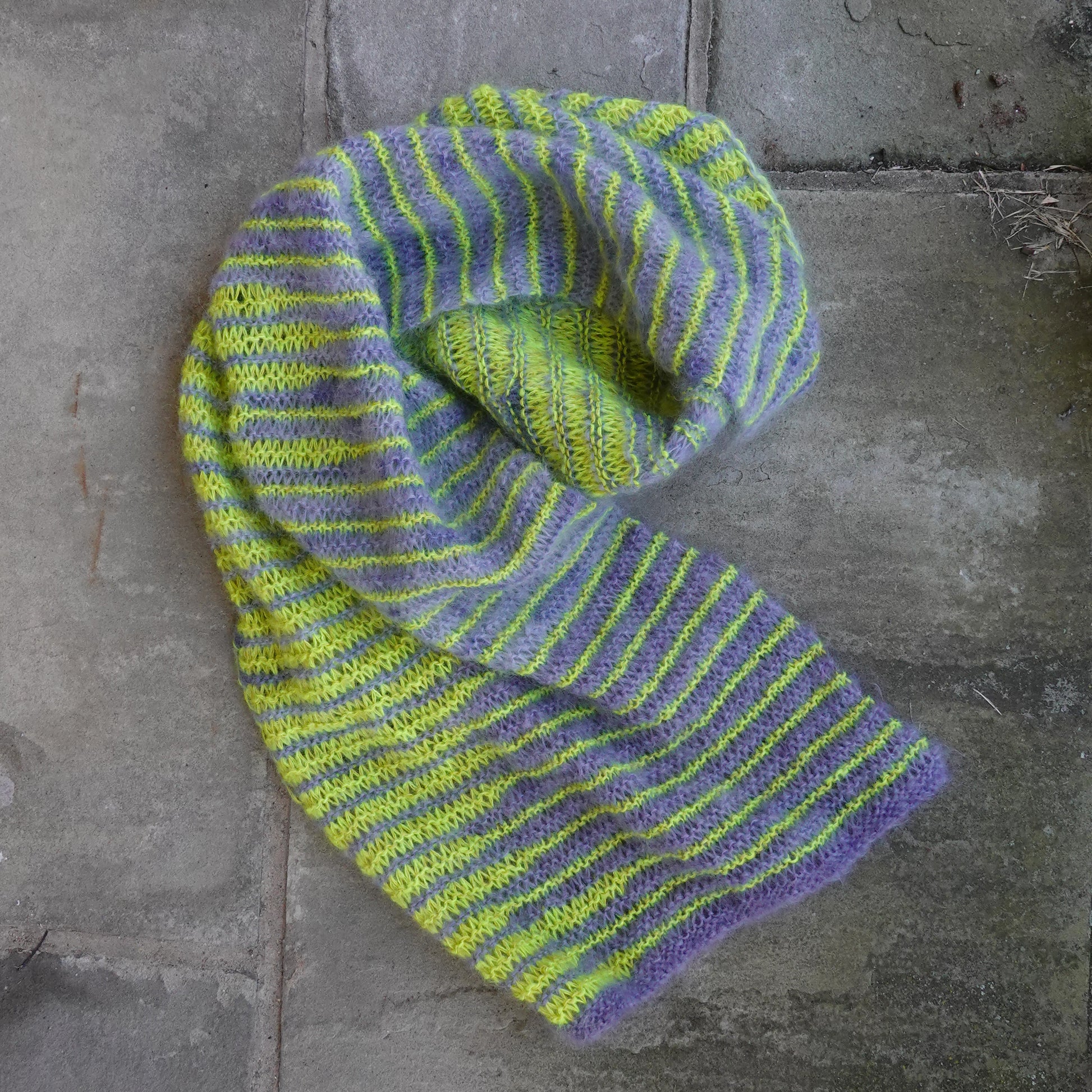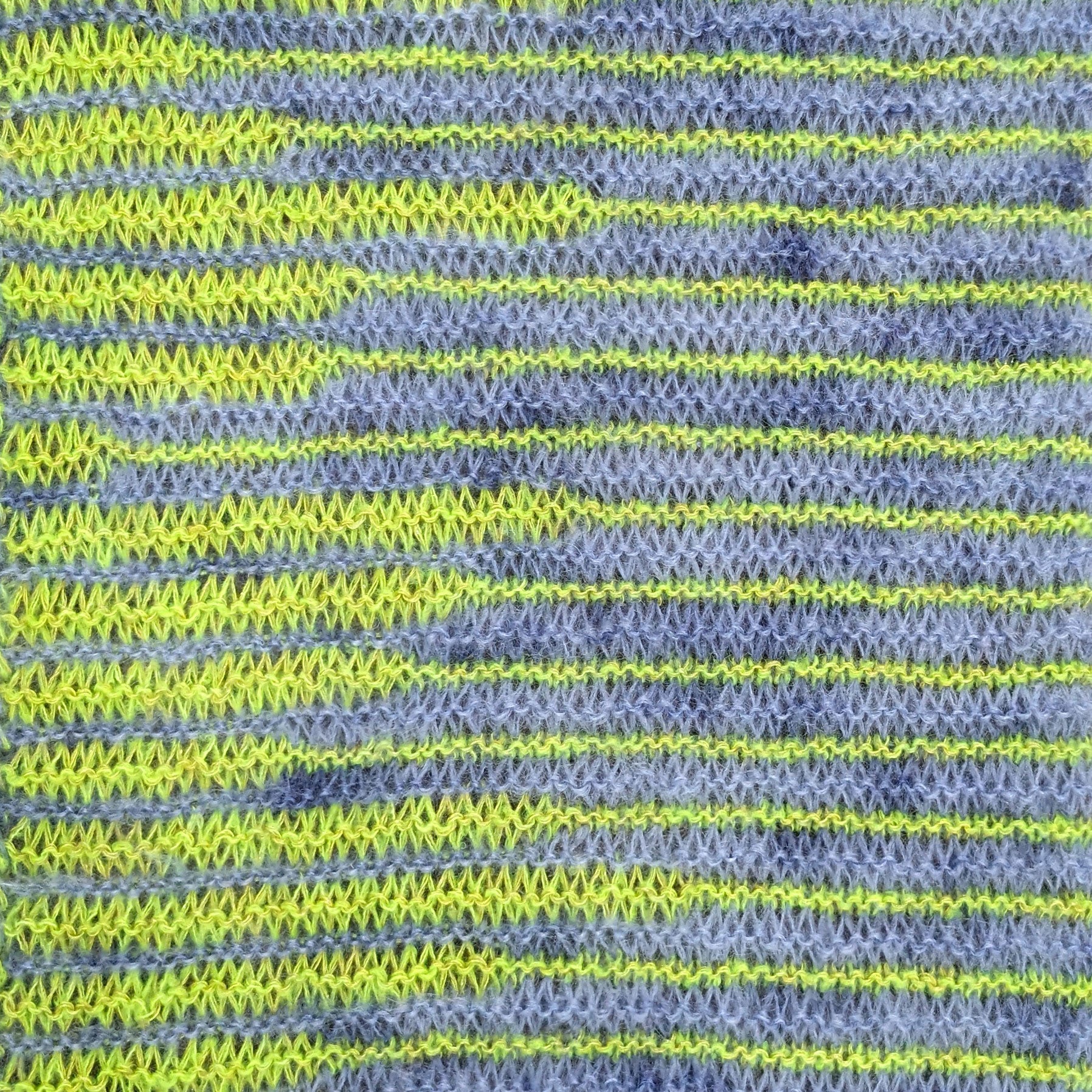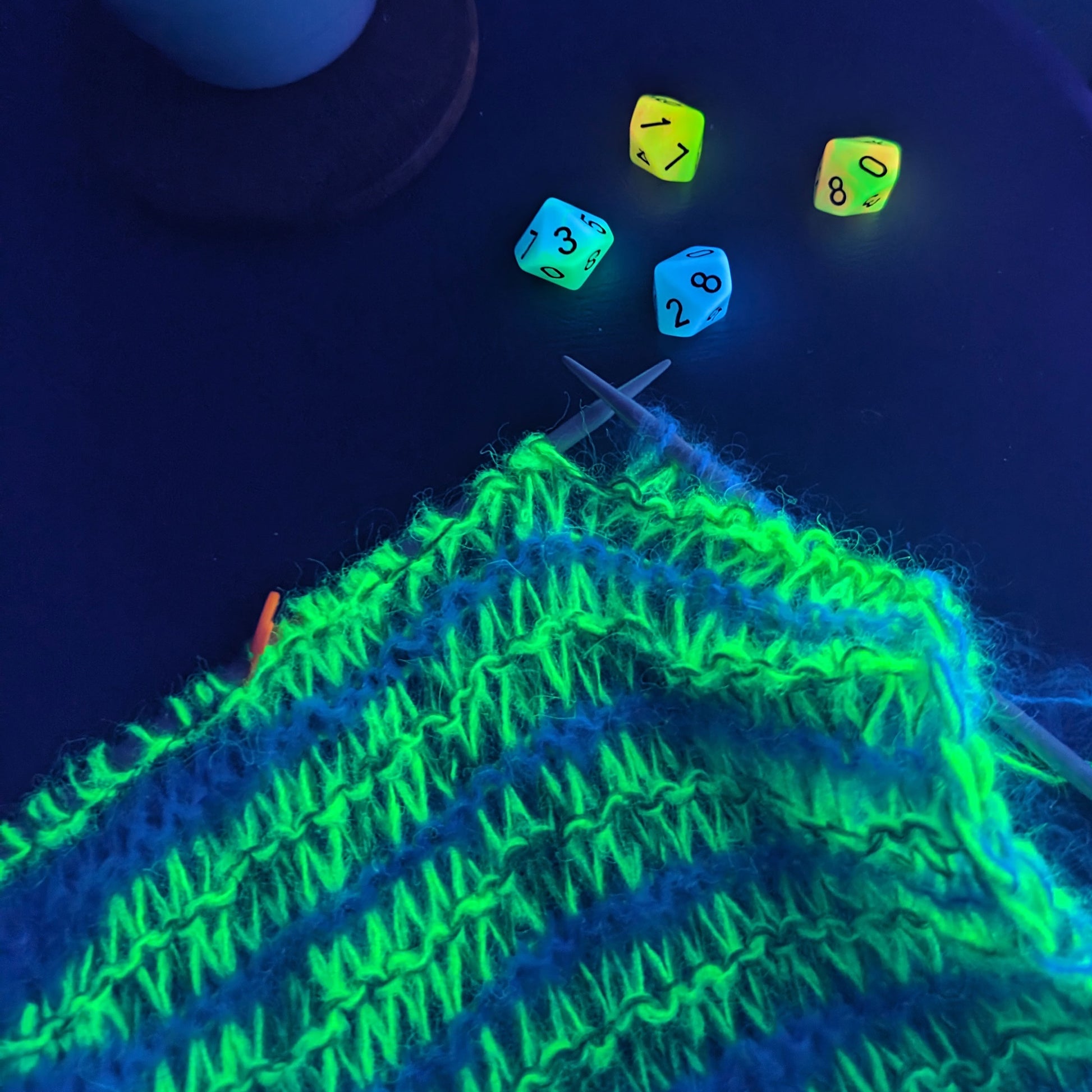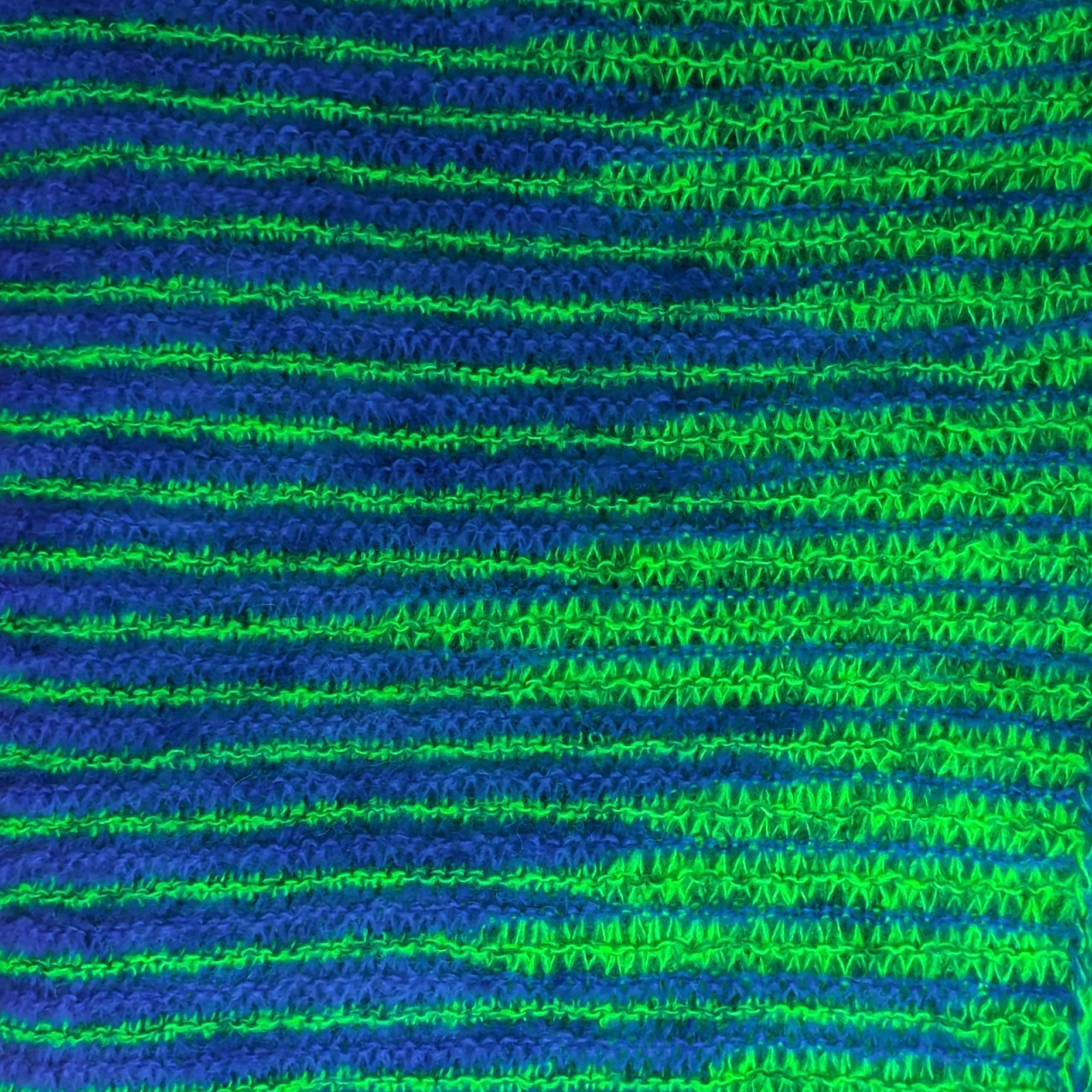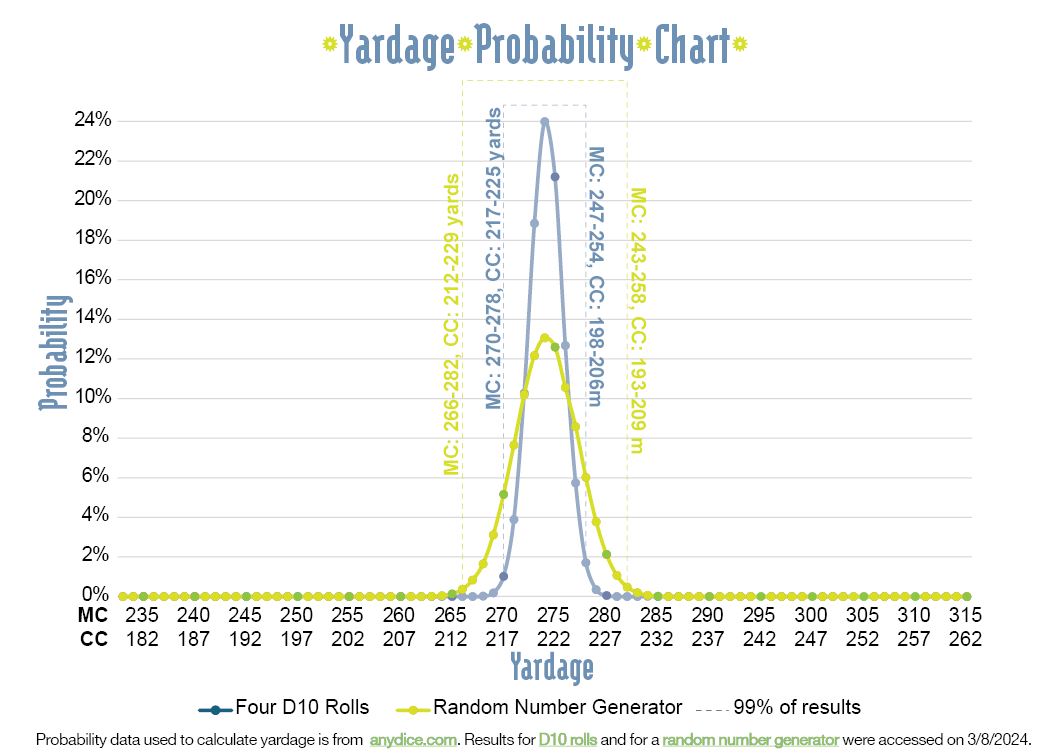Xandy Peters
Abacus Wrap Algorithmic Knitting Pattern
Abacus Wrap Algorithmic Knitting Pattern
Couldn't load pickup availability
The Abacus Wrap is a number game within a knitting pattern. There are 6.2619358791105326873282776709998e+98 unique outcomes for this project, so it's unlikely any two knitters will make the exact same scarf. The pattern uses dice to determine the varying lengths of color. The thick and thin striped colorwork is created with a super simple "long stitch" technique. The pattern looks great in fluffy mohair or in contrasting colors of basic wool.
Pattern Stats
Finished Size: 18 x 68” (46 x 172 cm) rectangular wrap.
Yarn: Approx. 315 yards (288 m) of MC and approx. 264 yards (241 m) of CC. Yardage may vary, see notes on yardage below and yardage chart in photos.
• Main Color (2 skeins) - JMR Studio Worsted Weight Mohair, 245 yards (225 m) per 4 oz; 78% Mohair, 13% Wool, 9% Nylon.
• Contrast Color (1 skein each, both yarns held together) - JMR Studio Fingering Weight Mohair, 320 yards (293 m) per 100g; 63% Silk, 23% Kid Mohair, 11% Nylon, 3% Polyester Held with Lavender Lune Yarn Co. Suri Alpaca, 328 yards (300 m) per 50g; 74% Suri Alpaca, 26% Silk.
Yardage: The amount of each color used for this pattern fluctuates based on the random numbers used to determine the stitch pattern. MC uses approx. 233 to 315 yards (213 to 288m) and CC uses approx. 182 to 264 yards (166 to 241m). 99% of possible results fall within a much smaller range. The Yardage Chart shows the distribution of all potential yardage outcomes.
Needles: Size 8 (5 mm) straight needles, or size needed to obtain gauge. Straight needles work best with long stitches. Circular needles with a thin cord allow the long stitches to tighten and stretch, making them harder to manipulate.
Gauge: 12 sts x 14 rows = 4 x 4” (10 x 10 cm) square in pattern.
Other Materials: 10 sided die or random number generator, stitch marker, scale, tapestry needle.
Generating numbers: In my sample, I used four ten-sided dice (D10) to choose a number between 4 and 40 sts. If you don't have dice, you can use an online app like RANDOM.org to generate your numbers. If you follow this link, you'll get a list of 63 integers between 4 and 40. Note: Each time you visit the link or refresh the page, the list changes. You can also just choose numbers as you knit.
There is a slight difference between different methods of picking numbers. The dice are more likely to give results in the middle of the range while the number generator will have more high and low peaks.
Tech edited by Liz Rolle
